|
|
|
Since mounting the Victor 1+, I have not been able to replicate Rotax 447 climb rates. I purchased new left-hand IVO blades, and I noticed that they were set up in a different mode than the original right-hand blades. The new blade chord seemed to be smaller close in to the hub and the taper from maximum chord to the tip was greater. One would think the old blade profile would give better climb. The photo below shows the chord and taper differences. Both blades are supported by a pencil below the outer tip of the black blade. (For comparison purposes, I used a 60 inch right-hand blade off the Rotax 447 and a 72 inch left-hand blade because it was red and provided good contrast for the photo. The actual propeller used on the Victor 1+ was a 62 inch left-hand IVO.)
I called IVO and asked if one could purchase a set of left-hand blades with the same profile as the right, and the answer was "no". And so I started looking for a propeller with a fatter, larger chord, blade. The Powerfin propeller is 1/2 inch thicker than the IVO propeller that was replaced. Propeller bolts, 150 mm long, were ordered from McMasters in Chicago. These bolts were too long and had to be shortened by about one fourth of an inch. The IVO extension was retained but I was uncomfortable with the Powerfin being centered entirely by propeller bolts. The Powerfin is designed to be mounted on a flange with a one inch centering boss. Also, the Powerfin propeller bolt hole clearance was greater than those used by IVO. This makes it easier to mount the Powerfin, but more difficult to center the propeller with out a centering boss. One would like to center the Powerfin properly, and to minimize imbalance and reduction drive bearing loads. |
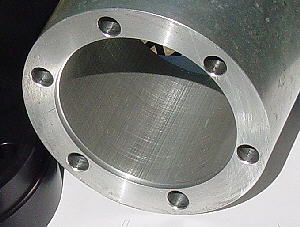 The propeller end of the extension was counter bored a little greater than 1/16 of an inch deep with an inside diameter of 2.600 inches.
The propeller end of the extension was counter bored a little greater than 1/16 of an inch deep with an inside diameter of 2.600 inches.
|
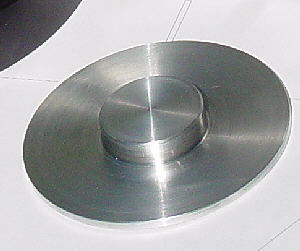 An aluminum insert was made 1/16 of an inch thick and with a one inch OD boss that was 1/4 of an inch high.
An aluminum insert was made 1/16 of an inch thick and with a one inch OD boss that was 1/4 of an inch high.
To minimize clearances, I took the Powerfin hub to the machine shop and asked the machinist to match the boss to the bore in the hub. Also, I asked that he match the extension ID and the insert OD. As shown, the insert weighed 30 grams or 0.8 ounces.
|
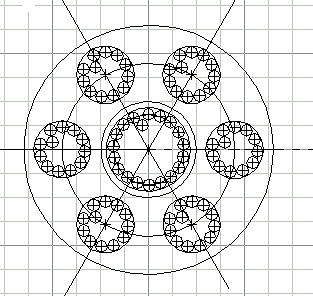 To lighten the insert, templates were made and fixed to the insert so that lightening holes could be drilled. Hole centers were prick punched, and all holes started with a 1/16 inch OD drill, followed by 3/32 and 1/8 inch OD drills. The hole centers were punched out and the scalloped contour filed to the final shape.
To lighten the insert, templates were made and fixed to the insert so that lightening holes could be drilled. Hole centers were prick punched, and all holes started with a 1/16 inch OD drill, followed by 3/32 and 1/8 inch OD drills. The hole centers were punched out and the scalloped contour filed to the final shape.
|
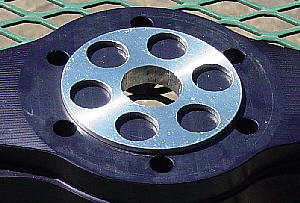 The insert installed in the hub half.
The insert installed in the hub half.
Finished insert weight was 15 grams or 0.4 ounces. The new propeller is shown below. The Powerfin, set at 9.5 degrees, seems to give about the same indicated airspeeds for a given engine cruise rpm. The Powerfin has greatly improved rate of climb. I can't tell a difference in noise level between the IVO and the Powerfin. The Powerfin may give a little better air flow around the engine and through the radiator. But a check on better engine cooling will have to wait for a 90+ degree F day.
|
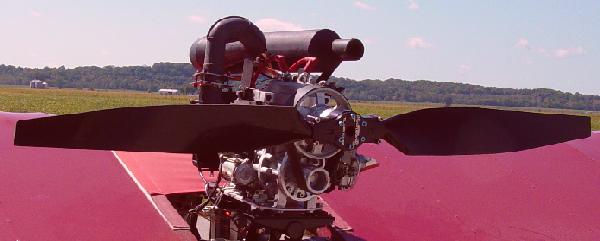
|
